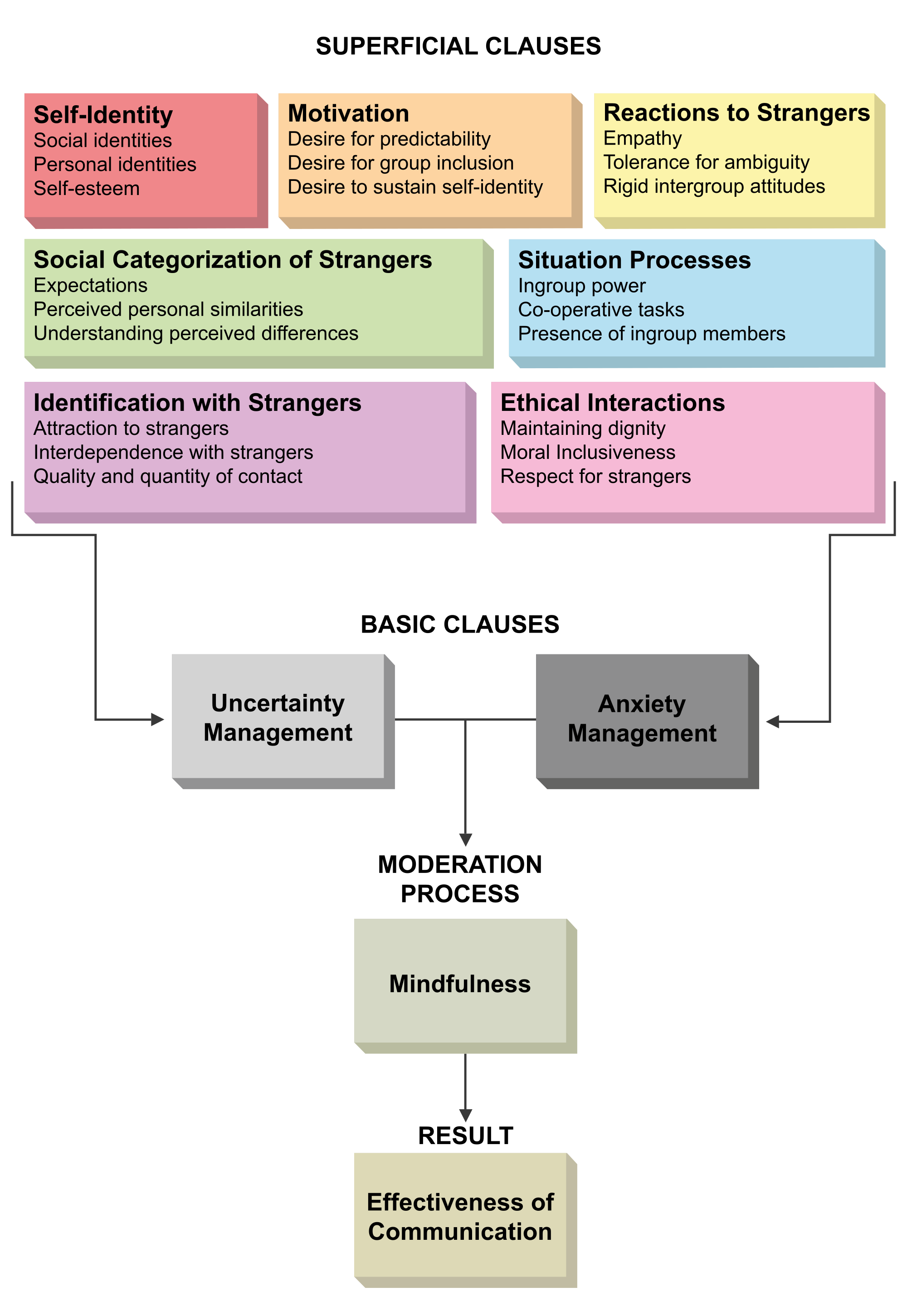“The beginnings of personal relationships are fraught with uncertainties.” ~ Davis (a communication professor at the University of California)
Hey, what’s up darlings 🙂 today I’ll be introducing to you a topic I find quite interesting, called the Uncertainty Reduction Theory of Charles Berger.
Strangers. Every single one of us on this planet called earth has started out as strangers at some point. I feel like meeting someone for the first time forms the foundation of how that relationship would be. Then again… sometimes our first impressions of a person may not be the best but overtime this can change as you get to know the person. Berger believes it’s natural to have doubts about our ability to predict the outcome of initial encounters. Berger’s Uncertainty Reduction Theory (URT) focuses on how human communication is used to gain knowledge and create understanding. Uncertainty is very critical to communication. When strangers meet for the first time, the primary concern is to reduce uncertanty and increase predictability and this theory focuses on just that.
 As I was here, thinking about examples that I could use to put this theory in perspective my light bulb came on. There’s this TV show I watch called “Married at First Sight”. In a social experiment series, where strangers get married at first sight you’ll see exactly how the uncertainty theory unfolds. Talk about putting the horse before the carriage, I’ll say lol.
As I was here, thinking about examples that I could use to put this theory in perspective my light bulb came on. There’s this TV show I watch called “Married at First Sight”. In a social experiment series, where strangers get married at first sight you’ll see exactly how the uncertainty theory unfolds. Talk about putting the horse before the carriage, I’ll say lol.
https://www.youtube.com/watch?v=ejgCnox8QtU
Imagine going on a blind date for the first time, your nerves may be a mess and you don’t even know this person, furthermore, never seen them before; so that’s just “great”. Your uncertainty levels about this person are going to be high but you may become more inclined to relax and feel comfortable if you realize you both have something in common. That is an example of how the uncertainty reduction theory works. Berger argues that our drive to reduce uncertainty about new acquaintances gets a boost from three prior conditions:
Anticipation of future interaction: We know we will see them again.
Incentive value: They have something we want.
Deviance: They act in a weird way.

In this video below, it shows how uncertainty reduction theory is present within the various animated films.
Anxiety Uncertainty Management (AUM)
This theory is an extension of URT with the added variable of something we’re all aware of – Anxiety. Gudykunst predicted that strangers seek to manage anxieties and uncertainties they have about each other by using mindfulness and this can help improve intercultural adaptation and communication, through the reduction of stereotypes and prejudice.
Story Time
For instance, if you’re like some of my friends who moved away to another country, far far away to go to college/university you may feel anxious that you’re out there alone, with no one that looks familiar. This is when uncertainty kicks in and you feel uneasy about interacting with all these new faces, this might be because of stereotypes you’ve subconsciously picked up about people from this culture. However, the AUM theory predicts you can successfully reduce this anxiety/uncertainty by becoming aware of prejudice/stereotypes that might be affecting your judgment, hence, reducing your uncertainty levels and thus increasing your chances of having successful intercultural interactions with everyone you meet in your new country.
My Thoughts
The Uncertainty Reduction theory falls under the Socio-psychological tradition as an objective theory.This theory has some very valid criticisms and quite frankly, I agree with them. In my opinion, the theory cannot be entirely strong if someone can poke valid holes in it.
This brings me to the ends of this post, that’s all for now ♥


I love how you summarised the essence of the theory as a natural occurrence, and that you provided not only a written example, but a video as well. I look forward also to hearing your thoughts on the soundness of the theory itself! 🙂
LikeLike
Thank you, I took your advice and incorporated my thoughts 🙂
LikeLike
It’s great how you showed the application of the URT in film. Incorporating the AUM theory in this post,demonstrating how it extended from the URT was very useful.
LikeLike
Thanks Martha, I appreciate it. 🙂
LikeLike